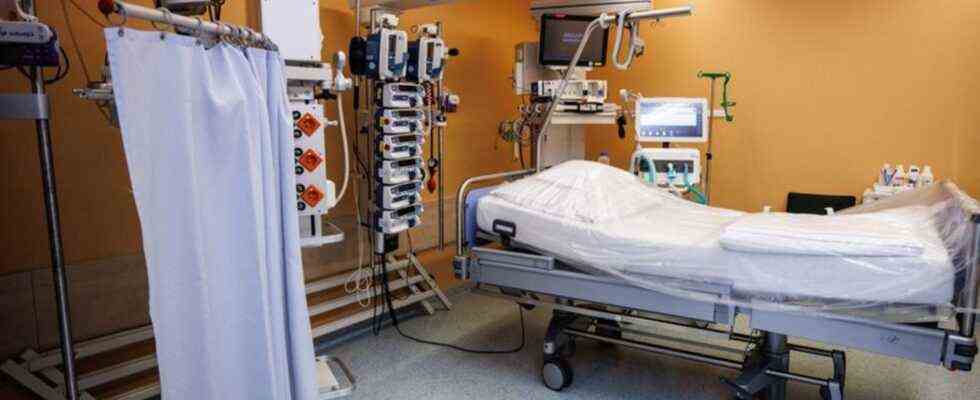First year of the pandemic
Fewer treatments and more intensive care beds in clinics
A free intensive care bed can be seen in an intensive care bed room in the Asklepios Clinic. Photo: Matthias Balk / dpa
© dpa-infocom GmbH
The corona pandemic is a constant burden for the staff in the clinics. The hospitals had to reorganize a lot. Treatments have been postponed. More intensive capacities are needed.
Fewer treatments overall, but more beds for the seriously ill: The number of intensive care beds in German hospitals rose by five percent in the first year of the 2020 corona pandemic.
That is an increase of 1,400 to a total of 27,000 beds compared to the previous year, as the Federal Statistical Office in Wiesbaden announced on Monday. In contrast, the number of treatments in the clinics decreased by 13.1 percent or 2.5 million.
“The growth observed in the number of intensive care beds is due to the efforts of the hospitals to expand this important resource in the face of the pandemic,” said the chairman of the board of the German Hospital Association, Gerald Gass. Unfortunately, it should be noted that this high level could not be maintained through 2021. Many hospital locations would have had to reduce their intensive care capacities again due to a lack of staff.
Number of beds decreased
According to statisticians, the total number of beds in the 1901 clinics in Germany fell by 7,400 to 486,700. The treatment days in hospitals were also down in the past year compared to 2019. With around 122.6 million it was around twelve percent or 16.7 million days less. According to the first preliminary results, the number of beds is an annual average.
According to statisticians, the average bed occupancy in 2020 was 68.8 percent, down by 8.4 percent. “That means that the hospital beds were occupied on an average of two out of three days,” says the statement from the Federal Statistical Office. It was highest in Berlin with 74.2 percent, and lowest in Rhineland-Palatinate with 63.1 percent.
Standard supply severely restricted
According to Gaß, the numbers show very clearly how much the hospitals should have restricted standard care in 2020. The average bed occupancy fell by more than eight percent – almost 2.5 million fewer hospital treatments. “Many interventions had to be postponed.” In many cases, however, clinics would have had to convert multi-bed rooms into single rooms to protect against infection. These figures show that compensation payments were absolutely necessary in 2020.
“The facts make it clear that Covid-19 stresses the departments in the hospitals very differently,” said Eugen Brysch, board member of the German Foundation for Patient Protection. Not even 70 percent of the beds are occupied. Most clinics would now work with the concept of sliding operations. However, there is no uniform standard for this meaningless term. “This has consequences for cancer patients, neurological and cardiological patients.” It is overdue for the Bundestag to issue binding criteria. After all, only parliament is democratically legitimized to set criteria for the distribution of life chances.

